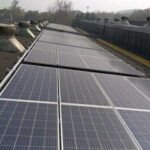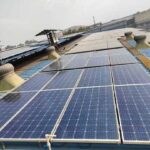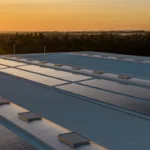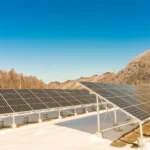Solar Power System Efficiency: How to Calculate for Residential, Industrial & Commercial Use
Solar Power System Efficiency: How to Calculate for Residential, Industrial & Commercial Use
Pre-Module Losses | Tolerance of rated power | Consider that the module does not deliver the power as stated in the data sheet. Manufacturers provide a tolerance, often up to 5%. |
Shadows | Shadows may be caused by trees, chimneys etc. Depending on the stringing of the cells, even partial shading may have a significant effect. | |
Dirt | Losses due to dirt up to 4% in temperate regions with some frequent rain. Up to 25% in arid regions with only seasonal rain and dust. | |
Snow | Dependent on location and maintenance effort. | |
Reflection | Reflection losses increase with the angle of incidence. Also, this effect is less pronounced in locations with a large proportion of diffuse light, i.e. clouds. | |
Module Losses | Conversion | The nominal efficiency is given by the manufacturer for standard conditions. |
Thermal losses | With increasing temperatures, conversion losses increase. These losses depend on irradiance (i.e. location), mounting method (glass, thermal properties of materials), and wind speeds. A very rough estimate is ~8% | |
System Losses ~ 14% | Wiring | Any cables have some resistance and therefore more losses. |
MPP | Ability of the MPP tracker in inverters to consistently find the maximum power point. | |
Inverter | Inverter efficiency | |
Mis-sized inverter | If the inverter is undersized, power is clipped for high intensity light. If it is oversized, the inverter’s efficiency will be too low for low intensity light. | |
Transformer | Transformer losses, in case where electricity has to be connected to a high-voltage grid( 11 KV and above ). | |
Operation & Maintenance | Downtime | Downtime for maintenance is usually very low for photovoltaic systems. |
Suggested Articles

Benefits of Solar Energy: Why Switching to Solar Makes Sense
Switching to solar energy offers numerous benefits, from lowering electricity bills to reducing your carbon footprint. This guide explores how solar power supports sustainable living, provides cost savings, and creates a cleaner environment for homes, businesses, and industries. Learn why adopting solar energy is not just smart, but essential for a greener future.

Solar Panel Sizes and Features in Delhi/NCR: A Complete Guide
Planning to install solar panels in Delhi/NCR? Explore the different sizes, technologies, and key features of solar panels available for residential, industrial, and commercial use. Learn how to choose the right one for your energy needs and roof space.

PM Surya Ghar Muft Bijli Yojana 2025: Online Registration Made Simple
PM Surya Ghar Muft Bijli Yojana 2025: Learn how to register online and get free electricity under this government scheme.

What Is an Array Junction Box in Solar PV Modules? | Complete Guide
The Array Junction Box (AJB) is a critical component in solar PV systems, connecting multiple solar modules and ensuring safe flow of electricity to the inverter. This blog explains what an AJB is, its key features, types, and why it is essential for both residential and commercial solar installations. Understand how AJBs protect your system from overload, short circuits, and environmental factors while maintaining optimal performance.

Net Metering and its Advantages
Net Metering allows solar panel owners to feed excess electricity back to the grid and earn credits, reducing energy bills. Learn the key advantages of net metering for homes and businesses.

Latest MNRE List: Approved Solar Module Manufacturers
Check the latest MNRE-approved list of solar module manufacturers to ensure quality and compliance for your solar projects in India.

India and IMT-GT JBC Sign MoU to Boost Energy Efficiency in Southeast Asia
The first meeting of the G20 Energy Transitions Working Group was held in Bengaluru, India, and was a success, with participants sharing a consensus on the priority areas of energy security and diversified supply chains.

Latest 100 kW Solar Plant Price in Delhi | Subsidy, ROI & Payback
Thinking about installing a 100 kW solar system in Delhi? This 2025 guide breaks down the 100 kW Solar Plant Cost in Delhi, explaining price per watt, total investment, energy generation, and key benefits for industries and businesses.